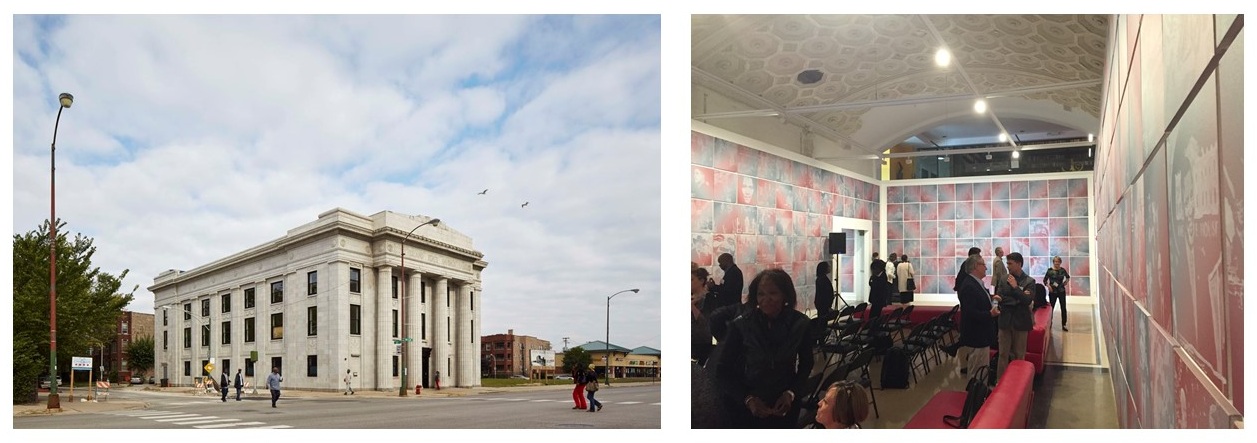Mindful City Building through Creative Placemaking
/By Michael A. Wang
I recently participated in an Urban Land Institute [ULI] forum in Chicago on Implementing Creative Placemaking [CPM]. CPM is an innovative approach to placemaking that strives to integrate art and culture, along with great design, into real estate development projects early in the process. This two-day forum, which brought together developers, architects, planners and others from across the United States, took place on the South Side of Chicago and included an enlightening tour of the Grand Crossing neighborhood where Theaster Gates, an artist and professor at the University of Chicago, has been leading a unique community rebuilding effort.
Theaster Gates’ Stony Island Arts Bank, Grand Crossing Neighborhood, Chicago, IL
Gates’ revitalization projects are the essence of Creative Placemaking, as his approach focuses on a process and values that are best described as mindful city building. This process actively engages members of the community to make conscientious interventions that find beauty through the repurposing of existing physical, cultural and social assets that are latent.
Forum participants were asked to contemplate how Creative Placemaking as a tool could become more accessible to the traditional development community, which is often more driven by return on investment. Among the barriers discussed were those that could be categorized as related to “time”, “language” and “trust”. With respect to time, Gates’ approach argues that one might “slow down to go fast”, thereby engaging in a more collaborative process that results in empowerment and mentoring. Traditional development tends to assume that “time is money” and, therefore, has an aversion to unknowns, including unpredictable approvals processes and zoning challenges, that can impact tangible returns.
Theaster Gates sharing his Dorchester Avenue projects in the Grand Crossing neighborhood
“Language” can be a barrier as well, with the development community likely hesitant to incorporate Creative Placemaking tenets that they do not fully understand. Similarly, it can be challenging for artists and aspirational members of the community to fully comprehend the language of development and what is involved in navigating typically complex approvals processes.
“Trust” is perhaps the largest hurdle. Developers are often demonized and not given credit for the risks they are taking. Achieving community buy-in can often be challenged by NIMBYism and the fear that one’s neighborhood will be gentrified – physically and culturally – leading to displacement. Figuring out a mechanism to not only empower members of the community but to provide them with a means to realize some of the gain from revitalization efforts should be a continued focus.
Repurposing found resources and creating cultural gathering places
Creative Placemaking holds tremendous potential to “lift all boats” when done thoughtfully. Digging deep to uncover a community’s essence and finding a way to incorporate cultural, social, historical aspects – through providing venues for performing arts, visual arts, gathering, etc. – can also have notably positive impacts on the traditional development bottom line. How can this be achieved? This is not solely a matter of educating the development community regarding the processes and benefits of integrating Creative Placemaking, it requires communities to be proactive in establishing reasonable approvals processes that offer incentivizes. This can take the form of expedited permitting or tax incentives or zoning relief such as density bonuses, to name a few.
When done well, Creative Placemaking holds tremendous potential to truly revitalize the full spectrum of communities – even those that are significantly disenfranchised – because it is founded on utilizing the existing resources of a place, including its human capital. Just as cities continue to evolve over time, mindful development can be a platform for ensuring the longevity and authenticity of place.
Reference: Theaster Gates, Ethical Redevelopment: Arts + Culture Build Cities






